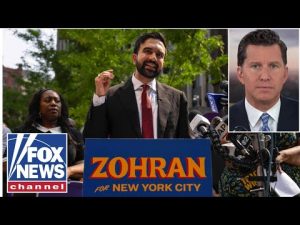In the grand theatrical play of American politics, Donald Trump is, without a doubt, a star performer who commands the stage with a flourish that is both captivating and contentious. As he waltzes into the second act of his presidency, the question isn’t just about his place among his presidential predecessors but also about the scale and depth of his ambitions. Victor Davis Hanson, often heralded as a sage in conservative circles, insists that Trump isn’t launching a revolution, as critics would eagerly claim. According to Hanson, he is leading a counter-revolution—an enthusiastic attempt to return the nation to its founding ethos and principles. It seems Trump has set his sights on the full spectrum of American life, challenging the progressive status quo that has, in his view, swayed too far off the course laid out by America’s founders.
Trump’s second term aims to tackle what he perceives as thirty years of drift toward a neo-socialist state. His strategy appears to be quite the gambit: instead of merely slowing down the so-called “progressive project,” his mission is to stop it entirely. Hanson suggests that no other Republican, neither Bush, McCain, nor Romney, had the audacity or vision to take on such a Herculean task. In his first term, Trump might have been the outsider, unfamiliar with Washington’s ins and outs. Yet, after four years in office and a deeply introspective intermission, he’s returned with the zeal and discernment to only allow in allies who are as serious as he is about the task ahead.
One of the particularly poignant points raised is Trump’s ability to look beyond just rectifying the policies themselves. He’s seen addressing the root causes of what he identifies as systemic issues—education, demographics, and bureaucratic overreach—all critical arenas where progressives have, allegedly, wielded transformative power. Trump isn’t just skimming the surface by countering policies; he’s delving into the bedrock where power is amassed and maneuvered. This approach, of course, has sent the opposition party into a tailspin, as they see the foundation of their ideological stronghold being challenged.
The Democratic Party, as viewed on this stage of political drama, seems to be painted as an ensemble cast unwittingly part of an ‘anti-American’ narrative, with their pushes for open borders and identity politics. Their armed resistance to Trump’s policies is intense, furious even, as his administration shakes the very halls where their progressive ideals have flourished, apparently unchecked, for years. Yet for all its flaws and resistance, they remain focused on promoting ideologies viewed by some as discordant with foundational American values.
Ultimately, Trump’s brand of muscular Americanism is portrayed not just as an exercise in governance but as a cultural campaign—a battle to reclaim and reinstate what he and his supporters see as the quintessential American ethos. It’s not just an election cycle; it’s a dramatic confrontation over the soul of the nation. And, whether one subscribes to this narrative as a bold reclamation or a tempest in a political teapot, it’s undeniably got the populace watching, debating, and, above all, engaged. After all, in the world of politics, as in theater, the best performances are those that are impossible to ignore.







